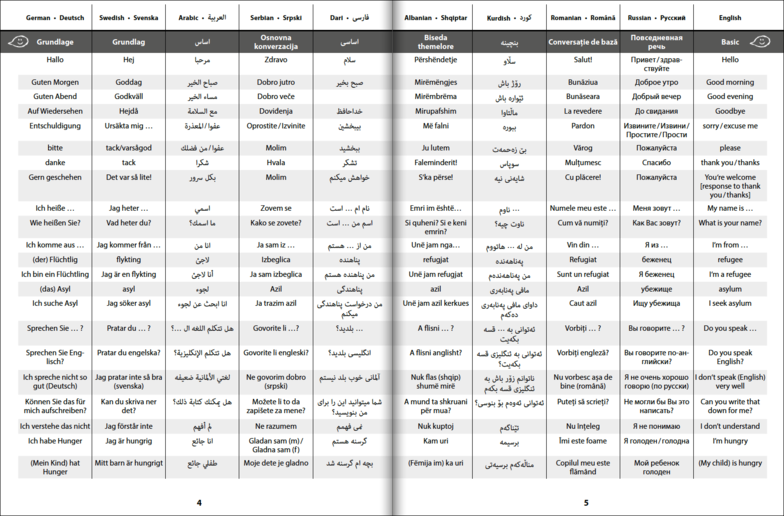Note: This website was automatically translated, so some terms or nuances may not be completely accurate.
Linzertorte and the Internet
Nice to meet you. I'm Yoshikazu Nagashima, responsible for the second installment of the Ars Electronica Report. I work in the CDC department, where I plan and produce advertising campaigns leveraging digital technology and develop new services.
The Multifaceted Nature of the Internet
My Ars Electronica report will focus squarely on the theme of "The Multifaceted Nature of the Internet." To explain why I chose this theme, please allow me to introduce the following passage:
"Over the past 30 years,Ars Electronicahas introduced and actively participated in progressive works and projects born from various electronics labs and workshops. Its activities have served as a trigger for the digital revolution that transformed economies, societies, and cultures. The visions and questions posed by these innovations continue to influence society today, showing no signs of fading."
This is an excerpt from a text reflecting on its own activities, found in the "30th Anniversary Commemorative Catalog" published by Ars Electronica in 2009. (The English text was translated by Nagashima.)
Visiting the Ars Electronica venue and experiencing the festival's atmosphere firsthand made this passage feel profoundly resonant. Ars Electronica is not only a globally authoritative media art festival but has also consistently functioned as an entity that thinks in constant dialogue with contemporary society—sometimes sounding the alarm, sometimes posing questions, and sometimes presenting visions of the future. You can sense this sense of purpose, or rather, this spirit, emanating from the entire festival venue.
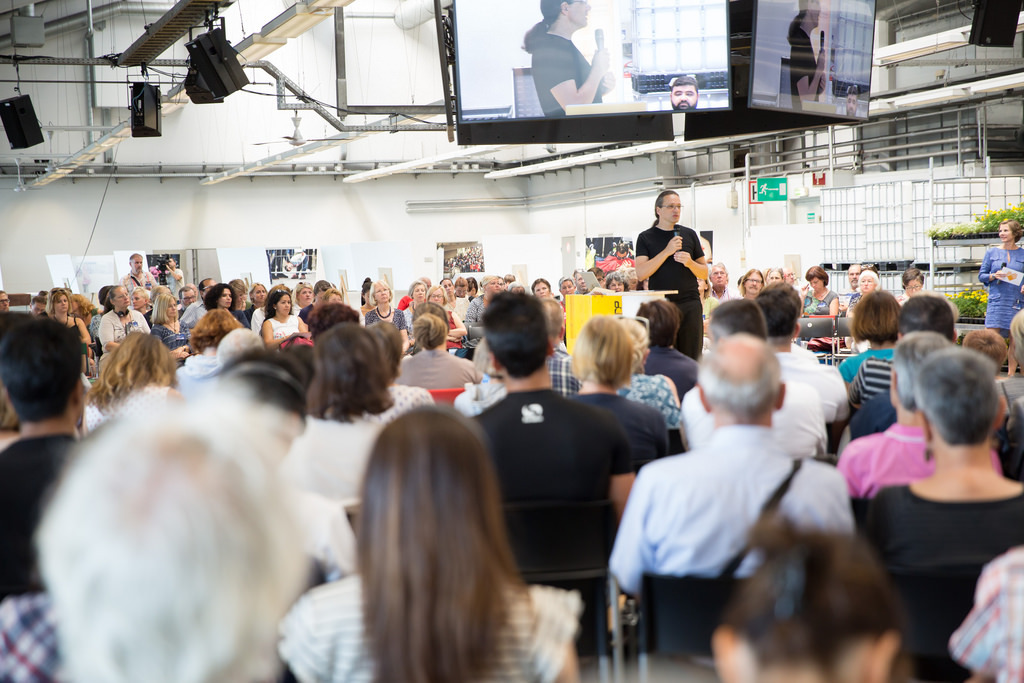
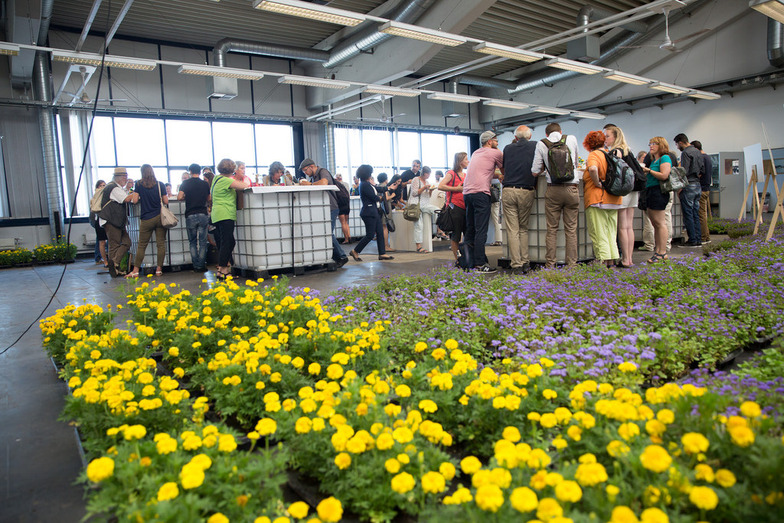
This year, what kind of works did Ars Electronica award in its competition? I wondered if anything might emerge when looking specifically at works selected through the lens of "Internet and Society." I'd like to explore this by introducing a few works.
Random Darknet Shopper

The first work we'll introduce received an Honorary Mention award in the "Interactive Art +" category of the Prix Ars Electronica competition hosted by Ars Electronica.
By the way, have you ever heard the saying, "There are three worlds on the internet"? It describes how the internet consists of three distinct layers: the "Surface Web," the "Deep Web," and the "Dark Web." These three worlds are explained as follows:
Surface web... Sites and information that appear in search engine results. The world accessed daily by the general public.
Deep web... Websites not crawled by search engine bots. Information that doesn't appear in search results. Includes databases, academic paper archives, and other information shared among limited groups.
Dark web... An underground network within the Deep web where highly criminal information and goods are traded, accessed by hackers and criminals. Access requires special browsers like "Tor" that anonymize the user's IP address.
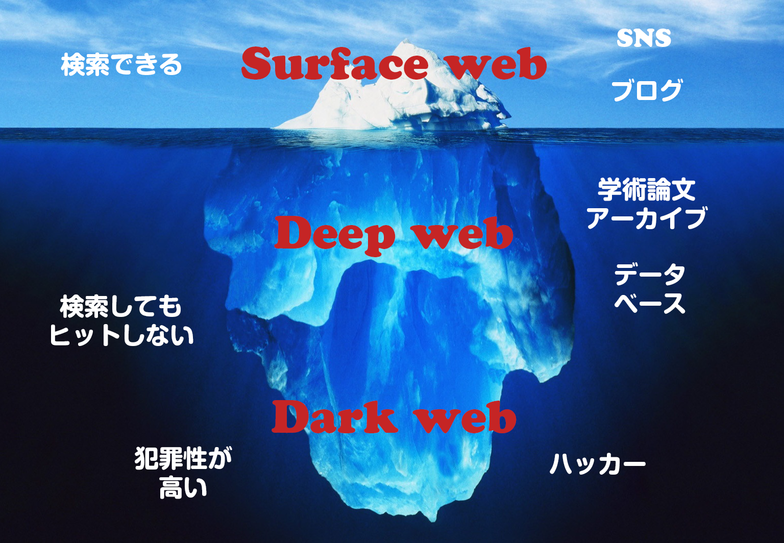
This "Random Darknet Shopper" is an experimental project where a bot (automated program) randomly purchases items weekly from online shops on the Dark web. The bot actually buys the items and has them shipped to the exhibition venue. Purchases are budgeted, using $100 worth of Bitcoin (about ¥10,000) each week.
At the Ars Electronica exhibition venue, purchased items were displayed and introduced on monitors. They ranged from legal to illegal, encompassing a wide variety of objects. Examples included replica jeans from famous brands, car key picking tools, a high-resolution copy of a Hungarian passport, a Sprite can designed to hide items inside, illegal items like drugs, as well as items available on regular online shops like Lacoste polo shirts and an e-book version of a French cookbook. ( See the Instagram post showcasing the purchased items here )
The description states, "This Dark Web online shopping demonstrates how the internet can blur national laws." In a world where items legally produced and sold in Country A might be illegal in Country B, a truly globalized market like the Dark Web connects diverse jurisdictions into one unified marketplace. This blurs the concept of legality, effectively creating a vast gray zone accessible from virtually anywhere.
What's even more intriguing is that in such an anarchic, anonymity-based market, what becomes paramount is "trustworthiness." Dark web shopping sites actively incorporate features like "user comment" sections and user-rating systems, similar to those we use on everyday shopping sites. Moreover, Random Darknet Shopper reports that for all 12 orders placed over a certain period, the goods were delivered without fail.
This work uniquely illuminates the underground world of the internet, one we rarely consciously consider. But beyond that, I believe it also hints at the future of the internet.
The function of "globally connecting individuals" is fundamental to the technology (and philosophy) of the internet; it may be a kind of destiny already encoded in its DNA at its invention. If so, as technology and infrastructure advance, and the internet improves its performance, people will increasingly circulate everything through it. Bitcoin could also be seen as an experiment in the globalization of "currency" via the internet.
OpenSurgery

The second work we introduce, "OpenSurgery," also won the "Award of Distinction" (equivalent to the runner-up prize) in the "Interactive Art +" category.
The photo above shows this work, which is essentially a "DIY laparoscopic surgery assistance robot" (made by the artist). As you know, DIY means "do it yourself," and the artist, Frank Kookman, "built" this device for laparoscopic surgery, which requires extremely advanced and precise manufacturing.
This project addresses the growing issue of healthcare disparities evident in developed nations like the United States. The widening economic gap and soaring healthcare costs mean the wealthy can access high-quality services, while the poor struggle even to see a doctor. Amidst this, Kookman encountered astonishing videos on YouTube. Uninsured Americans were uploading "medical DIY videos" showing how to perform procedures that should be done by surgeons or dentists themselves.
Inspired by this situation, Mr. Corkman began building his own laparoscopic surgical assistance robot, a device that can cost up to 200 million yen.
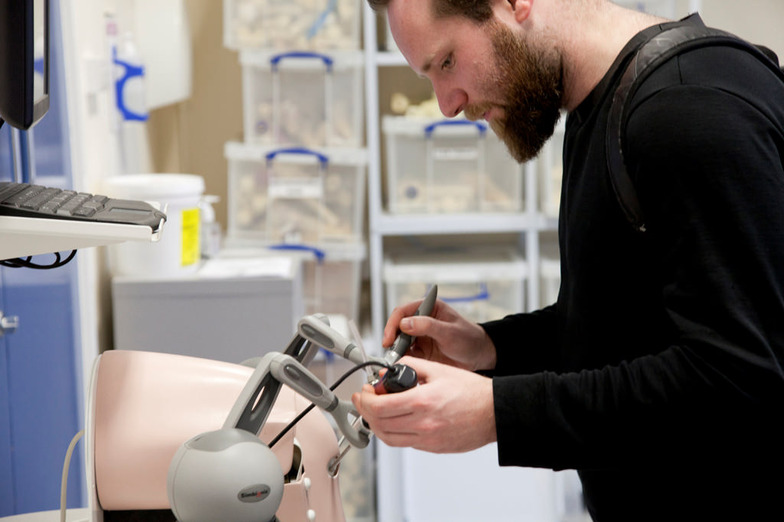
He reportedly found a cooperating physician, studied actual assistive robots in use, and completed the project by manufacturing parts with 3D printers and laser cutters, as well as purchasing components online. When I saw the actual device, the control unit was a PS3 controller (laughs). What was interesting when he spoke at a seminar was that the part corresponding to the robot's hand, which actually performs the procedure, is extremely precise. He felt overwhelmed, thinking it might be impossible to make, but then found it being sold on a Chinese online shop, ordered it, and it arrived in just a few days.
The completed assistive robot is a prototype, and its movements aren't stable enough for actual surgery yet. However, its manufacturing cost is extremely low compared to commercially available assistive robots, and it can essentially be built anywhere without needing a high-tech workshop.
This work questions the situation where healthcare, a service that should reach many people, has become an expensive service for the wealthy. I thought the phenomenon that initially inspired the creator – "people uploading DIY medical videos to YouTube" – symbolically represents one aspect of the internet. That is, "because the internet is grounded in the individual, it doesn't discard minor people or information." Television, newspapers, magazines, and similar media have inherent limits on the amount of information they can handle due to constraints of time and space. This inevitably requires selecting what to include and exclude, which in turn necessitates criteria. Establishing these criteria often demands policies or underlying ideologies. However, I believe it's fair to say "the internet lacks this." Information on the internet has always been, and likely always will be, a mix of the valuable and the worthless. Viewed differently, this means even "pebbles" have a place. Once detached from an organization, every person is an individual, a "pebble" if you will. The internet is a medium where people can still disseminate information and interact with others even when they return to being individuals.
Refugee Phrasebook

Finally, I'd like to introduce the work "Refugee Phrasebook," which won the "Award of Distinction" (equivalent to the runner-up prize) in the "Digital Communities" category.
The photo above shows the installation at Ars Electronica, but it's a bit hard to see, so please take a look at the photos posted here instead.
Refugee Phrasebook is a project that created a "phrase book" in 2015, when many refugees from the Middle East suddenly migrated to various parts of Europe. Its purpose was to enable refugees and the people in their host communities (helpers and citizens) to establish basic communication. The phrase books were printed and distributed in refugee camps across different regions, and they were also published as a website and a smartphone app. All of these resources are available under an open license.
You might think creating a phrasebook would be simple... but it wasn't. The Middle East has linguistic diversity, and some people speak minor languages not even covered by Google Translate. The situation became quite challenging because refugees speaking these varied languages ended up scattered across different parts of Europe, where languages also differ by region. Moreover, this problem arose simultaneously and rapidly across Europe due to the 2015 refugee crisis, creating a serious situation requiring urgent action.
Amidst this, the Refugee Phrasebook began in August 2015 as several community projects in Berlin. Within about a year, it grew into an international open data project covering 44 languages, thanks to volunteers from various fields.

Beyond the project team members, translators, editors, designers, publishers, lawyers, doctors, and others from around the world participated—all as volunteers.
This case exemplifies the positive impact of the internet's ability to "liberate people from geographical constraints and enable interaction with others worldwide." Achieving something this complex in such a short time would likely be difficult in a world without the internet. This project demonstrates that motivated individuals from around the world, regardless of country or region, can gather online, share their skills and efforts, and accomplish something significant.
Summary
I've attempted to find the "Internet-like" elements in each of these three works. What do you think?
While thinking about how to introduce these works, two things occurred to me.
First, that "thrill of feeling like my room was connected to the world" I felt when I first used the internet might actually capture its essence. And second, I haven't experienced that feeling in a long time.
I also thought, "I haven't really been surfing the web lately," and "That blog I made ages ago is just sitting there dormant..."
The examples Ars Electronica highlights are probably radical cases a bit ahead of the general public. Yet, the impression I got from them was that sense of excitement about the internet I remember feeling before. It seems that at some point, my internet experience had become just checking the same websites and social media every day, and messaging the same people.
I felt compelled to refocus on the internet's inherent dynamic charm: its fundamental building block is the "individual," and with personal will and action, one can connect with diverse people worldwide.
That concludes this report. Thank you for reading to the end.
Next time, we'll feature a report by Atsushi Otaki from the Creative Planning Division 2/Digital Creative Center, focusing on cutting-edge wearable devices. Stay tuned!
Bonus Info
The title "Linzer Torte" refers to a famous dessert from Linz, Austria, the host city of Ars Electronica. The Linzer Torte at the " Cubus " restaurant on the 3rd floor of the Ars Electronica Center was deliciously sweet yet not overly so!

Was this article helpful?
Newsletter registration is here
We select and publish important news every day
For inquiries about this article
Author

Yoshikazu Nagashima
Dentsu Inc.
CDC
Born in 1974. After working at a web advertising production company and an advertising agency, joined Dentsu Inc. in 2001. Engaged in planning and production of advertising utilizing the internet and interactive mechanisms, as well as service development. Recent interests include blockchain and childcare.

